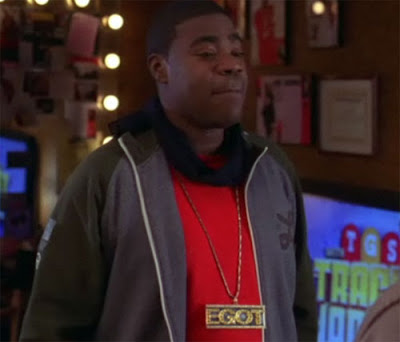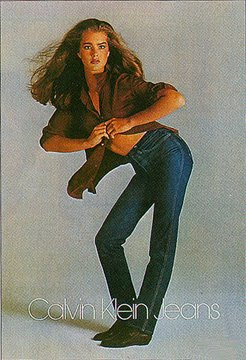Transmedia:Not Just Talking About It Edition

Hollywood and gaming's hot buzzword is "Transmedia." The Producers Guild of America recently defined a credit for Transmedia Producer, MIT has a program devoted to it and in a possible sign of jumping the shark, there is even a "bootcamp" for you to pay USD 1,000 to listen to the underlying theory.
But while all these people are concerning themselves with theory, analysis and concern over credits - one of them even includes Prince of Persia in his bio - one guy is just doing it. Jordan Mechner created, designed, produced (and even programmed the first Prince of Persia) video game, received story credit on the film for writing the first draft of the movie script and wrote the completely sold out Prince of Persia graphic novel. This could be seen as another case of measuring success by finding work outside the game business, but Jordan is still working in games. His success lies in his ability not only to create franchise IP that can exist independent of any media, but the talent to maintain integrity across all media.
I would try to explain his role in more detail, but this guy in the New York Times did it much better than I ever could, so I will just wholesale steal his piece and post it here:
A Gamer’s World, but a Dramatist’s Sensibility
By CHARLES McGRATH
THE producer Jerry Bruckheimer likes to say that he can make a movie from almost anything. In his long and box-office-friendly career, he has conjured movies from books (“Black Hawk Down”), from magazine articles (“Coyote Ugly” and “Top Gun”), from the real-life story of a woman who was both a welder and a stripper (“Flashdance”), from a notion tossed around the office (“Hey, let’s make a movie about submarines!” which led to “Crimson Tide”). Most famously, and most lucratively, he has made not just a movie but a franchise, “Pirates of the Caribbean,” from a theme-park ride.
By that standard, Mr. Bruckheimer’s newest picture, “Prince of Persia: The Sands of Time,” which is directed by Mike Newell and stars Jake Gyllenhaal and Ben Kingsley, doesn’t seem much of a stretch. “Prince of Persia,” which opens Friday, is based on a popular video game. You could even argue that video games are what most Bruckheimer movies yearn to be: nonstop action, without the distractions of too much plot or complicated characters. But except for the two “Lara Croft” movies, which may owe their success more to Angelina Jolie than to their Tomb Raider provenance, the track record of movies based on video games is not uplifting. “Street Fighter” was notoriously unwatchable. The official Nintendo magazine said of the film based on Super Mario Brothers: “Yes, it happened. Let us speak no more of it.”
If “Prince of Persia” does buck the odds then part of the credit should go to Jordan Mechner, who created the video game on which the movie is based and wrote the first draft of the screenplay. Mr. Mechner is also a blogger, with his own Web site (http://jordanmechner.com/), and a graphic novelist, with two books coming out at roughly the same time as the movie: “Solomon’s Thieves,” illustrated by LeUyen Pham and Alex Puvilland, the first volume in a projected trilogy about the Knights Templar; and “Prince of Persia: Before the Sandstorm,” illustrated by several different artists, which is a prequel to both the film and the game that inspired it.
He is a sort of a nerd’s nerd, in other words — a Renaissance man in the overlapping worlds of games and comics and now movies. He is the first video game creator to be involved in a subsequent movie version, and he pitched the project to Mr. Bruckheimer by showing him a “trailer” he had put together of clips from PlayStation 2 game footage: lots of wall-jumping and ledge-walking interspersed with shots of a scantily clad princess. Keith Boesky, a video game agent and intellectual property lawyer who helped broker the deal with Mr. Bruckheimer, said recently, “Everybody these days is talking about transmedia, but Jordan is the first guy to actually do it.”
If Mr. Mechner is a pioneer, however, he is also, by video game standards, a bit of a relic. His main claim to fame is two games — Karateka and the original Prince of Persia — that he created by himself back in the 1980s using an Apple II computer, which is practically Stone Age technology. Sitting recently in the basement of Jim Hanley’s Universe — a comic book store in Midtown Manhattan — he explained that he developed Karateka, a martial arts game, while still an undergraduate at Yale. His model was his mother’s karate teacher, whom he filmed in Super 8; using an old technique called rotoscoping, he then traced stills from the movie onto his computer.
“I wanted to create stories that the player would experience by playing instead of watching; it became a bit of an obsession,” he said in a way suggesting that, obsessionwise, he probably hasn’t changed that much. Mr. Mechner, who is 45 and divorced, with two children, is small, intense, a little awkward; his sentences sometimes consist of hesitations followed by bursts of information.
The original Prince of Persia, which came out in 1989, now seems almost touching in its primitiveness, closer to Pong than to Gungrave or Steel Battalion. It’s in only two dimensions, and the animation is jerky and sketched in. (Mr. Mechner’s model this time was his brother, whom he filmed jumping off walls near their home in Chappaqua, N.Y.) But, unusual at the time, the game had a plot of sorts, beyond the usual overcoming of obstacles that gets the player to the next screen, and in the prince it had a character Mr. Mechner hoped the player would actually care about. “I wanted a game where if you missed and fell too far, it would really hurt,” he said, adding that where characters like the Super Mario Brothers were weightless and stylized, he wanted his to be flesh and blood.
Mr. Mechner, who when he wasn’t programming took some courses in film history at Yale, compares the early days of video games to the days of silent film and says that he had to learn some of the same storytelling lessons as, say, Georges Méliès, the French special effects pioneer.
Prince of Persia: The Sands of Time, on which the movie is based, came out in 2003 and was a reimagining of the whole franchise, which in the age of Halo and Grand Theft Auto had come to seem antique. Instead of just Mr. Mechner at his computer there was now a whole team of animators, actors, programmers. The game has a clever do-over feature, an important element in the movie plot, in which the player gets to stop time and rewind it, and what Mr. Mechner calls a “Double Indemnity”-like narration, which doesn’t become entirely clear until the very end.
Mr. Mechner’s greatest asset as a moviemaker, in fact, may be that his sensibility is as much a dramatist’s as a gamer’s. Mr. Boesky, who was also involved in the “Tomb Raider” deal, said the original movie proposal included just a single paragraph of back story, while Mr. Mechner had a 20-minute pitch of new, nongame-related narrative. It could have been a story from “1001 Nights,” with an aging king; a Shakespearean relationship among three princes, one of them adopted; an evil vizier; a beautiful, tart-tongued princess; and a magic dagger. “We’ve had other game people come to us, but Jordan had a nice, worked-out story and interesting characters,” Mr. Bruckheimer said from London, where he was promoting the film.
“What appealed to me,” he added, “was the whole arena. There haven’t been very many movies set in that period.”
The movie imagines a medieval, pre-Islamic Persia — part historical, part fantasy — and centers on the prince’s quest to expose his father’s assassin, win the trust of the suspicious princess Tamina and keep the mysterious sands of time, which control history itself, from falling into the wrong hands.
“Jordan has gobbets of really cool detail,” Mr. Newell, the director, said. “He knows all about the ancient Persian texts; he can tell you what the Silk Road was like and how it felt going from the desert to a great river valley.”
Mr. Newell, best known for “Donnie Brasco” and “Four Weddings and a Funeral,” is not the first person who comes to mind when you think of big-budget action directors. “I’ve worked with huge numbers of people before, but they were all schoolchildren,” he said, referring to one of his more recent projects, “Harry Potter and the Goblet of Fire.” When Mr. Bruckheimer first approached him, he added, he deliberately did not mention that “Prince of Persia” was based on a video game, which was probably just as well, because Mr. Newell had never played one. “I tried to do it,” he said about the Prince of Persia game, “but I kept falling into the bloody revolving knives.” So he asked some of his assistants to play the game for him, and, he recalled, “they would spend half the time sneering at my incompetence.”
From the script Mr. Bruckheimer sent him, Mr. Newell said, it was clear that the movie wanted to be “a great three-ring circus of entertainment,” and that’s what “Prince of Persia” tries to be. The movie, especially in the trailer, does not disguise its video game origins: there are lots of scenes of a very buff Mr. Gyllenhaal running, jumping and climbing as if embarked on a rigorous parkour workout. And yet, game elements aside, “Prince of Persia” is almost a throwback, a swashbuckling yarn that owes something to the “Indiana Jones” movies and even more, perhaps, to “The Thief of Baghdad.” It’s a movie so old-fashioned that if it didn’t have a video game tie-in, no one would make it nowadays.
Mr. Newell said that he “cherry-picked” from the game, especially from its visual details. “I’d say, ‘That armor is really good, let’s talk to the costume designer,’ or ‘Those swords are really cool, let’s have some of those.’ But the notion of a characterless, emotionless, mechanistic story, which is what you almost inevitably get in a video game — that was never in the cards for me.”
In making the movie, he explained, he found himself drawing a lot on films that had meant a lot to him when he was young, especially “Ben Hur” and “Bad Day at Black Rock.”
He quickly added: “Of course, everyone’s taste is omnivorous, and that’s by no means the only kind of movie I liked. I’m the kind of guy who’s only really happy when it’s Hungarian, in black and white, with subtitles.”



Comments